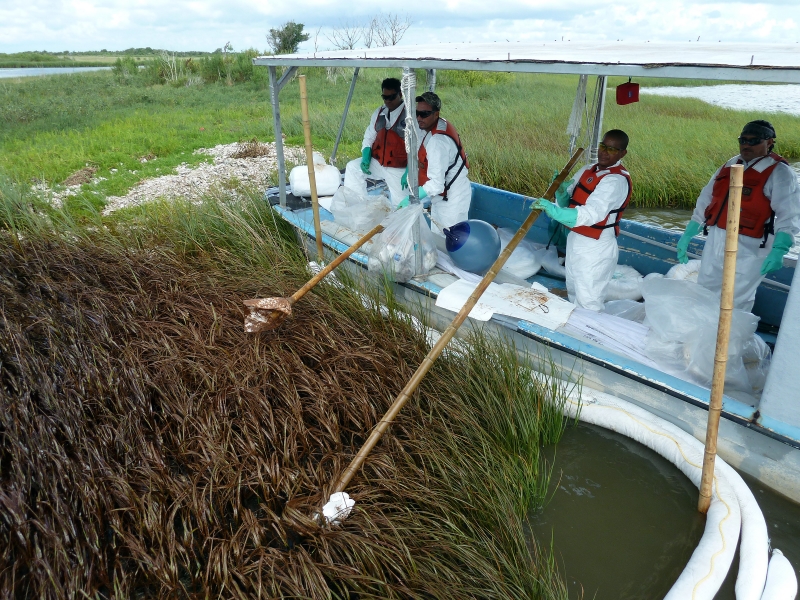
The Sea Grant oil spill outreach team has produced two new publications outlining what scientists know about the fate of that oil in the Gulf of Mexico environment. Those documents, Where did the oil go? A Deepwater Horizon fact sheet and Microbes and oil: What’s the connection? can both be viewed and downloaded at https://gulfseagrant.org/oilspilloutreach/publications/.
In 2017, the team produced Deepwater Horizon: Where did the oil go? This in-depth publication synthesized the peer-reviewed research concerning how both response actions and natural processes influenced the destination of the approximately 172 million gallons of crude oil that entered the Gulf. At the request of audiences around the Gulf interested in quick details regarding what scientists know, the team boiled the information down into a single-page fact sheet. This document hits the highlights using easy-to-understand graphics and simple descriptions, in accordance with the program’s mission to make science accessible to anyone who has an interest in a healthy marine environment.
Microbes—microscopic, single-celled organisms that include bacteria and fungi—play critical roles in the many chemical cycles in our global ecosystem. Microbe species that naturally break down oil live in all waters and all climates, but they became more widely known to the public after the Deepwater Horizon spill when populations in the Gulf assisted in consuming the oil. Microbes and oil: What’s the connection? explains how microbes have evolved to eat various chemical compounds found in oil as part of their diet. It also describes how these microbes’ behavior can differ depending on their species, the type of oil they encounter, and the place they live in the marine environment. Since the microbes work to naturally degrade oil, the publication looks at what scientists know about how man-made response efforts such as chemical dispersants impact their outcomes.
The Sea Grant oil spill outreach team produces a number of publications every year to answer questions audiences have about oil spills and their aftermaths. These bulletins are excellent resources for anyone—with or without an academic or research background—wanting to learn more about oil spill science. Additionally, the program shares science in person at seminars, most of which are recorded and shared online. To access any of the team’s products, visit their website at https://gulfseagrant.org/oilspilloutreach/.
The Sea Grant Oil Spill Science Outreach Program is a joint project of the four Gulf of Mexico Sea Grant College Programs, with funding from partner Gulf of Mexico Research Initiative. The team’s mission is to collect and translate the latest peer-reviewed research for those who rely on a healthy Gulf for work or recreation. To learn more about the team’s products and presentations, visit gulfseagrant.org/oilspillscience.
